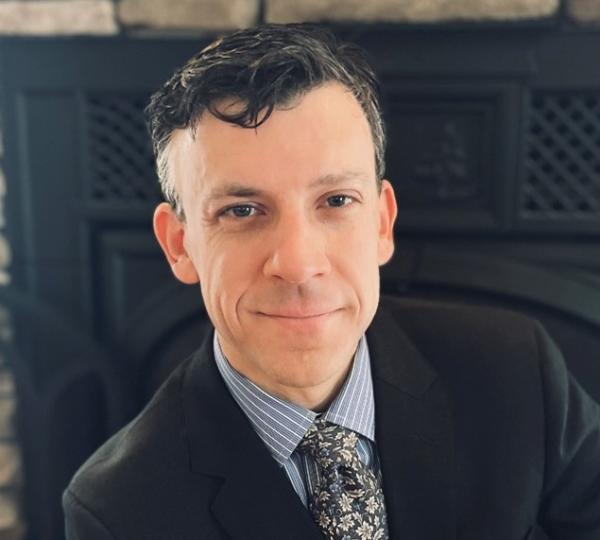By Steven Novakovic is the Managing Director, CAIA Curriculum for CAIA Association.
As a young whipper snapper coming out of college[i] I was ready to apply my vast learning and make an impact. It didn’t take long for me to conclude that I knew more than my bosses, whose several decades of experience seemingly didn’t include an introduction to Microsoft Office or typing with all your fingers[ii]. Despite my confidence[iii], eagerness[iv], and vast[v] finance knowledge, I was relegated to resident note taker, number cruncher, and other tasks deemed harmless— such as taking phone calls from unsolicited fund marketers or reading, summarizing, and cataloging piles of pitchbooks and PPMs that arrived in the mail daily.[vi]
It wasn’t until about two years of this seemingly mundane and inane work life that I started to realize that I didn’t know very much at all, and that my bosses were, in fact, very smart and talented individuals. Unleashing me onto the world on Day 1 would have been a very poor, if not, dangerous idea[vii]. The previous two years of taking notes while silently listening to phone calls with fund managers, entering data into spreadsheets, and reading marketing material from fund’s that we were never going to invest in was in fact, not a waste of my time or squandering my extensive skills. Instead, it was a period of massive knowledge accumulation and professional growth.
I was learning and experiencing the world of institutional investing. I was being exposed to a wide array of investment types and strategies. I was learning lingo, and seeing what was deemed good and what was deemed not so good. I got to make decisions in my mind that differed from my bosses, only to watch things play out and realize the mistakes I was making in my thought process[viii]. Eventually, my bosses determined that I had gained enough experience to venture out on my own to safely start influencing decisions, while continuing with knowledge accumulation.
Nearly twenty years later[ix], I can confidently say, that in the ever-changing world of finance, the knowledge accumulation never actually stops. There is always something new to learn, and we must remind ourselves that there is so much more that we don’t (yet) know than we (think we) know. That’s what makes this profession so exciting, the constant learning and exposure to new and different. So, what does this all have to do with AI[x]?
For the better part of the last year, I’ve been asking how AI is being applied in the finance industry. What can we do now with this powerful tool, and how is it improving existing processes? Thus far, the answers have been fairly limited for my part of the finance industry. But one consistent refrain is the value of AI in the finance industry is in automating mundane, time-consuming tasks such as summarizing large volumes of information. No longer will we need to wait for a fresh-out-of-college analyst to read through and summarize the 200 PPMs in our faceless and bottomless prospects@investmentfirm.com inbox. Instead, we can drop them all into an AI bot, and get a summary in mere minutes. In fact, we can even teach our AI bot to look for certain traits/characteristics that we favor and tell us if any of those 200 funds are worth taking a closer look at. We can then take any of the data in those PPMs and tell the AI bot to plot the information and spit out all the analytics we need.
How great is that? So much time saved. And we all know time is money, so one can only image how much money is saved as well. However, being the well-trained financial analyst that[xi] I am, the first question I ask upon learning all of this, is what’s the downside? What’s the risk?[xii] Well, we all know AI isn’t perfect, it is at risk of garbage in, garbage out. And training AI isn’t easy, sometimes the bots can lie to you and give unintelligible, or patently false results[xiii]. However, it can be argued that if we allow ourselves to not simply outsource all our thinking to AI and apply a little bit of thought to the output provided, we should be able to harness the technology for good and improve our outcomes.
This is where I get to the paradox that has recently been bouncing around my head and resulting in my wondering about the true benefits of AI. If we use AI to automate these mundane tasks, that means we need fewer fresh-eyed analysts, and that we assign our fresh-eyed analysts to tasks that we haven’t yet figured out how to automate with AI. And those analysts that we do hire, aren’t going through the same experience-building process that those before them benefitted from. When the bosses of these fresh-eyed analysts retire, what experiences and practical knowledge will the analysts have missed out on? Will they be able to absorb all the information provided to them by the AI bots and know what it means, what to do with it, and know when the AI bot is lying? Will they know what rules to give to AI to help find the next great investment? Will they actually truly comprehend?
Knowledge is all about accumulating experiences, gaining and growing from each new and different moment no matter how mundane or rote it may be. All these questions ultimately lead me to one central one. Just because we can use AI to automate entry-level tasks, should we? If executing those tasks is how we learn to do more complicated tasks down the road, does it make sense to outsource those tasks to AI? Or is there some other path we can take to get to that faraway point on the road that still results in a similar accumulation of knowledge?
I don’t want to sound like a curmudgeon yelling at AI to “get off my lawn.” And I’m certainly not afraid of change, or too old to learn new tricks (i.e., AI). But I’m also old enough to have learned[xiv] that there is no such thing as a free lunch. Therefore, when someone tells me how amazing this new AI tool is, and how much time and money it can save, the first question I’m going to ask is, at what cost? What do we (humans) lose by not performing the task ourselves, no matter how mundane? If the answer is accumulation of experience, knowledge, and growth, then I might just pass on using the AI bot, and instead frustrate that ambitious college graduate who isn’t yet ready to appreciate that listening, reading, and experiencing (and not doing), is the greatest professional endeavor they could ever hope for at this moment, even if they don’t realize it.
Footnotes:
[i] Ivy-league trained to boot
[ii] How is it that I’m stuck in this lowly position, when they don’t even know what a pivot table is!
[iii] Cocksureness
[iv] Impatience
[v] Or rather, minimal. But I didn’t know what I didn’t know, so it felt like it was vast!
[vi] Yes indeed, there was a time when funds printed their marketing material and physically mailed them to prospects. I know how foreign a concept that seems today – I’m not even that old, I swear!
[vii] Especially since my firm was not in the business of losing money
[viii] Fortunately not to the detriment of my employer because this was all hypothetical in my head
[ix] Again, I swear, I’m not that old
[x] That was in the title of this article, wasn’t it
[xi] I think. I did say I was confident, didn’t I?
[xii] Quick aside: it should be pointed out, that I did not learn to ask this question while in college. It was only through years of experience that I learned this to be the most important question.
[xiii] But then again, so can poorly trained humans!
[xiv] Through experience (go figure!), typically, the hard way
About the Author:
Steve Novakovic is the Managing Director, CAIA Curriculum for CAIA Association. In this role, he is responsible for managing the curriculum and ensuring the content remains relevant and reflects the current trends in the institutional asset allocator world. He joined CAIA Association in 2022 and has been a charterholder since 2011. Prior to CAIA Association Steve was a faculty member at Ithaca College where he taught a variety of finance courses including: Alternative Asset Management, Cryptocurrencies, and Wealth Management, among others.
Steve started his career at his alma mater, Cornell University, (B.S. 2004, MPS 2006) in the Office of University Investments. In his time at Cornell University, he invested across a variety of asset classes for the $6 billion endowment. His twelve years at Cornell generated substantial insight into endowment management, and fund investing across the alternatives and traditional landscape.





